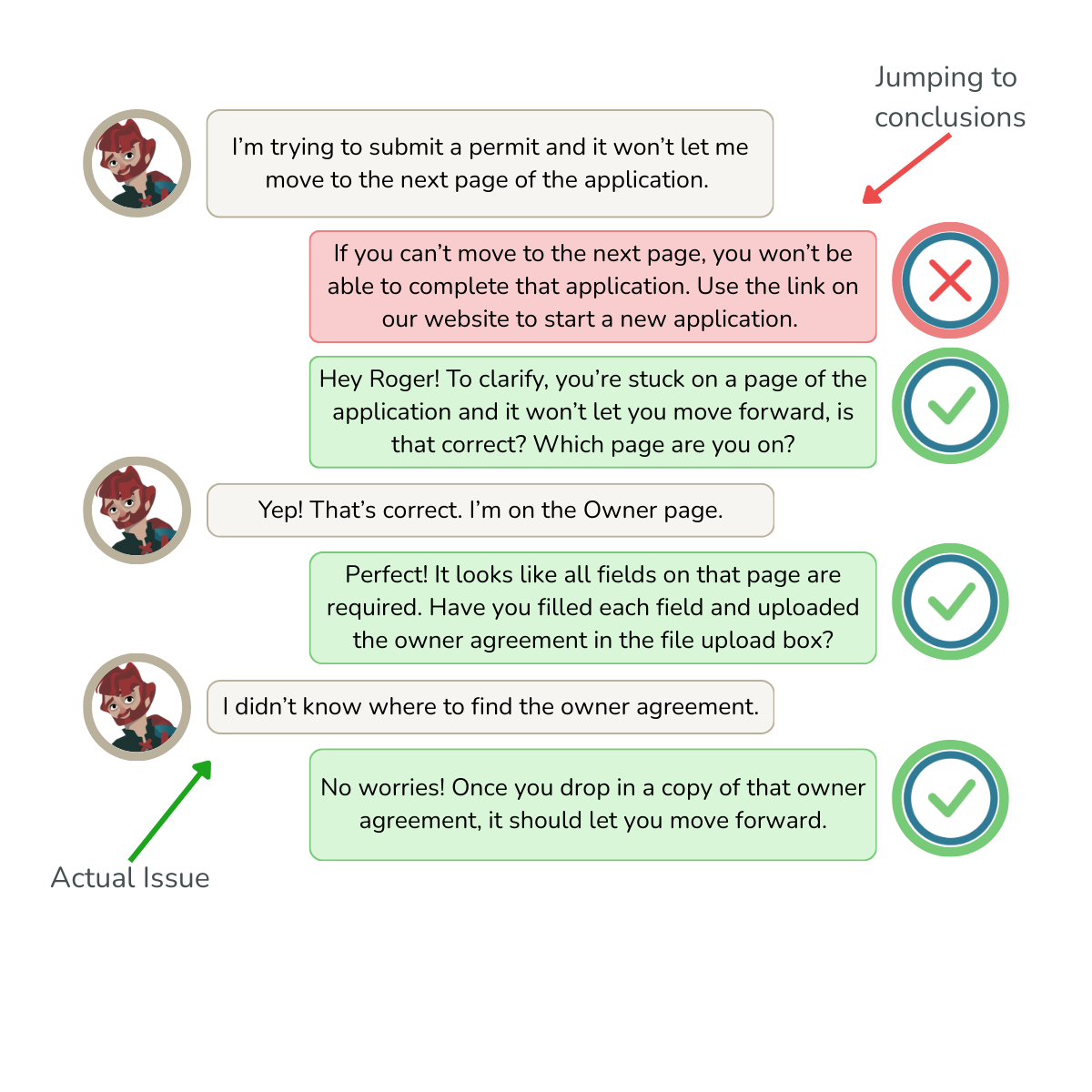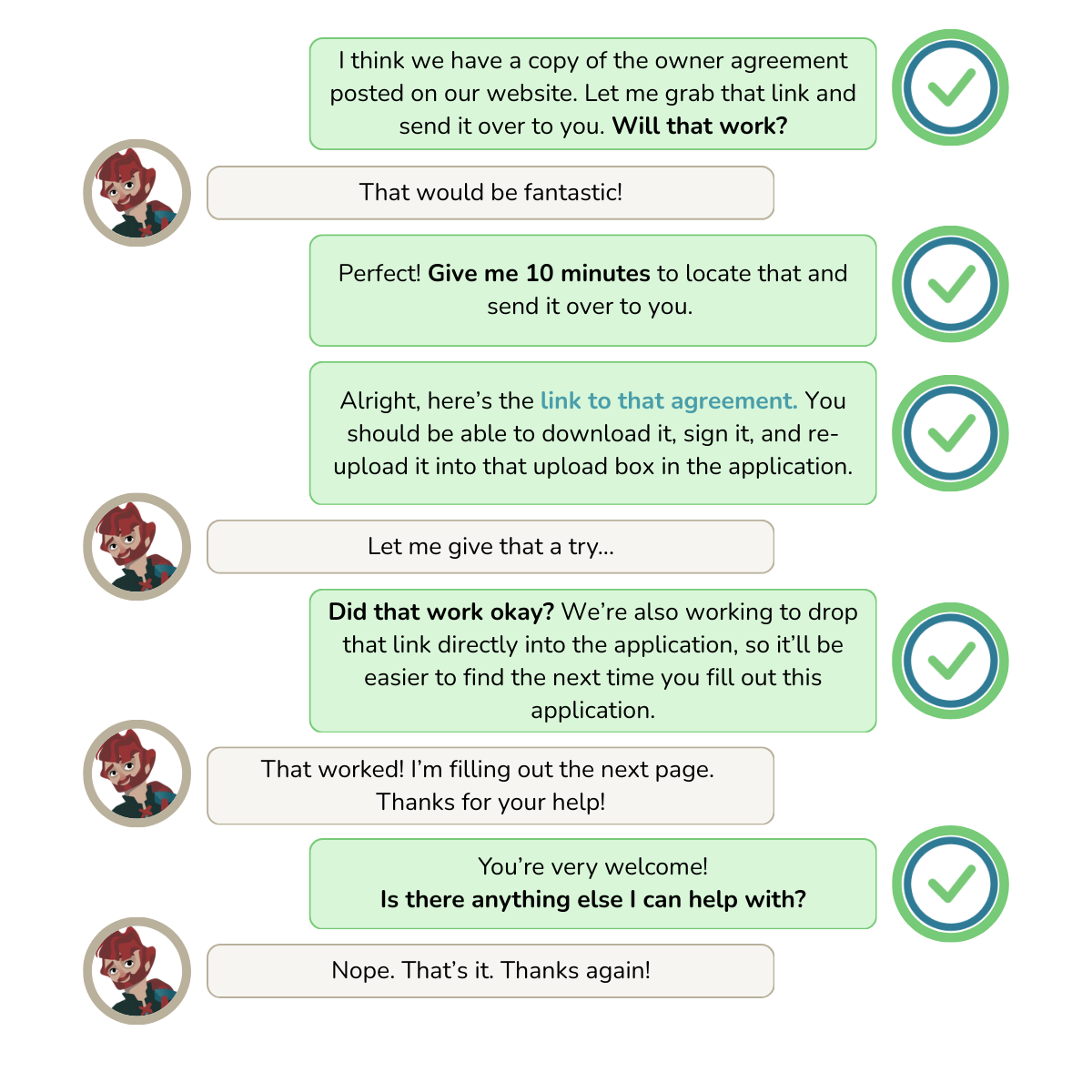Have you ever been stuck on hold with a customer support rep, for what feels like an eternity, only to get off the phone with your problem still unresolved? We've all been there. But here's the good news: customer support doesn't have to be that way. At Civic Review, we’ve worked to develop a customer support strategy that helps us deliver consistently awesome results to our users (you can ask them).
“The best thing…about Civic Review is the quick response I have had when I encounter a problem. Since we are new to this system the help they give is so valuable to our learning process.”
- Brenda Leota, Building Permit Administrator at Syracuse City, UT
As governmental staff, you know that your customers (like ours) are often navigating new and/or difficult situations. We've taken some of our own principles for stellar customer service and adapted them to work for your permit or license applicants. Check out the summary below of the basic principles and communication framework that we use for our customer support. We've adapted our own customer support framework for local government.
Core Customer Support Values
Your customer support culture should start with a handful of core values. These basic principles can be applied to every conversation.
Empathy
Your top priority should be to listen to the applicant and seek to understand what they are feeling. The old adage 'the customer is always right' is, well… not always right. (Shocking, we know!) But here's the twist: your customer is always justified in their feelings. If they're angry, they're not wrong to feel that way. Your goal is to get to a point where you understand why they’re angry, and can honestly say, “I’d be angry as well in that situation.” Sometimes that anger comes from just having a bad day - and that’s okay, we all have them!
Politeness
A few key phrases can help keep your communication positive and polite. Start with a friendly “Hello!” and finish by wishing them a nice day. Say thank you when appropriate, and make use of the words “please” and “you’re welcome”. When you're communicating through email or chat, it's especially easy for messages to be misread or misinterpreted. That's why it's a great idea to overdo it a little with politeness. And, with that same logic, if you get a message that sounds a bit 'snippety,' give the person the benefit of the doubt.
Honesty and Directness
Be direct when communicating with customers and don’t shy away from admitting when a mistake is made. When someone asks a question or brings up an issue, don’t automatically assume you understand the situation - ask them to explain it. Make it a practice to ask for clarification and restate their question in your own words.
Show Interest and Excitement
You’re likely very busy and have a lot going on day-to-day. But it's super important that disinterested or hurried feelings don’t transfer into your support communication. Take the time to show each user that you’re interested in THEM and their project/application. This makes a huge difference.
Support Communication Framework
The core values can be expanded into a simple 5-step framework to structure and guide each customer support conversation. These steps can be modified to fit the unique conversation, but it’s especially effective if you get into the routine of working through the whole process.
1. Respond Promptly
It is important to let citizens and clients know that you’ve heard them. Response times will vary based on the communication method; but we recommend answering chats and phone calls immediately and responding to emails and voicemails within four (4) business hours. For all methods, the faster the better, but no need to sacrifice your attention to a specific task for an email that comes in.
2. Get to the Root of the Problem
Have you ever suggested a solution only to realize it didn't actually solve the customer's real problem? It's a common mistake. Before you jump directly to a solution, you need to understand what's really going on. Get to the root of the problem by restating their challenge in your own words and asking a few 'why' questions.

3. Propose a Plan of Action
Now that you understand the challenge it’s time to propose a course of action. This might be something they need to do themselves, or it might be something you can provide. Either way, this plan of action needs to be confirmed. If you’re helping with the solution let them know how long it will take to get it done. If they’re executing the plan of action, provide them with any instructions or guidance that will help them successfully complete the plan.
4. Confirm the Action Taken
Whether the user executed the plan of action, or you did, you’ll want to confirm that it was done correctly. If the user did it, you can simply ask if they were able to get it done.
If you're handling the solution for the user, confirming with them is super important. Ask them to review your work or confirm that everything is working as expected. Don't close the conversation until you've gotten a 'yes!'

5. Ask if they Need Additional Help
Make sure they don’t need anything else before you close the conversation. Using a question rather than an invitation is best, since citizens or customers may still have questions - but not want to bug you. An open-ended question like, “Is there anything else I can help you with today?” will be more effective than “Let me know if you need anything else”.
Proven Steps to Improved Support
We've seen these principles work firsthand, and we're confident they can make a real difference for your organization. By taking a few small steps, you can create an environment where your citizens and customers feel heard and valued. This leads to a more positive and effective process for everyone involved.







